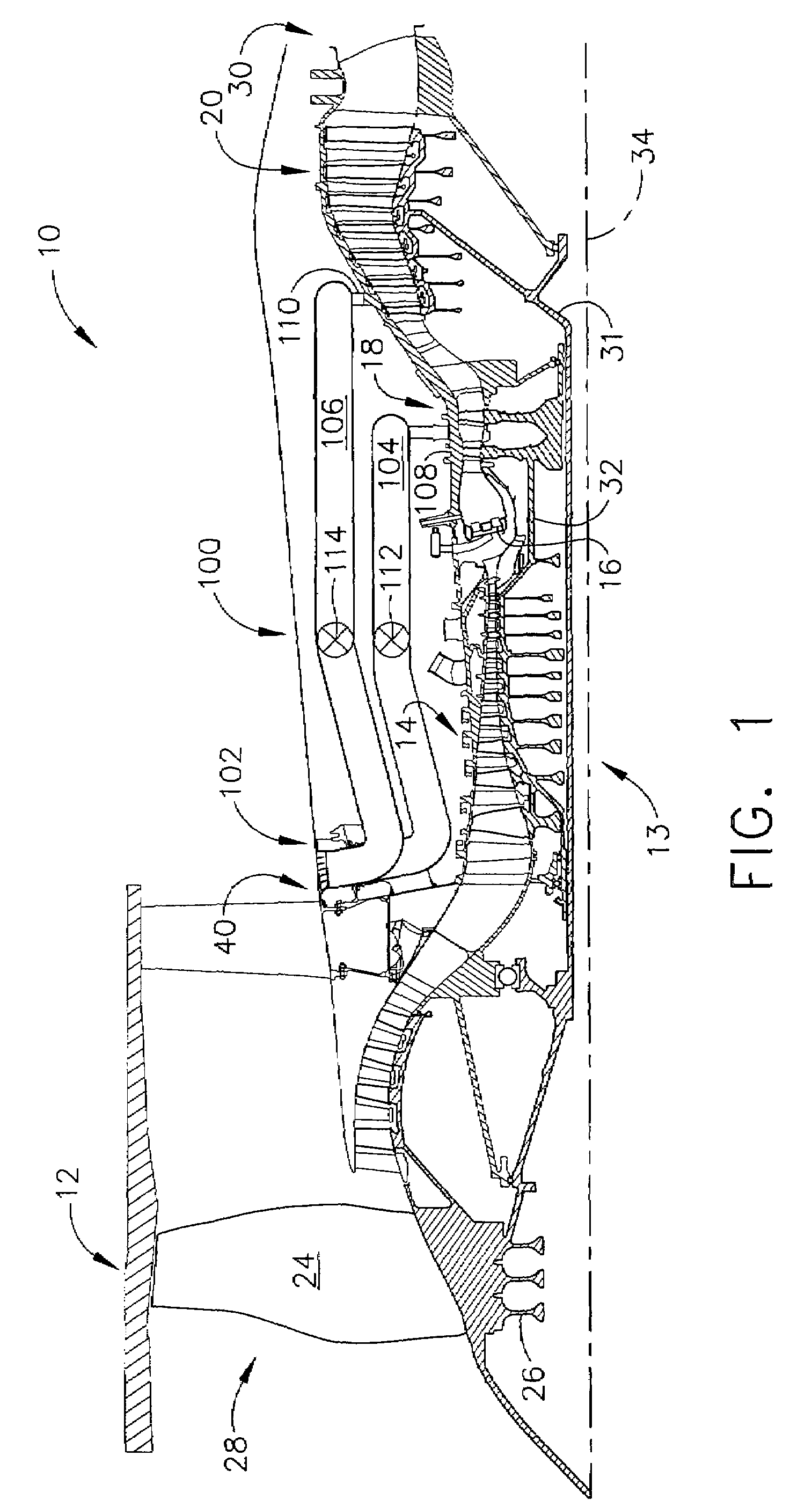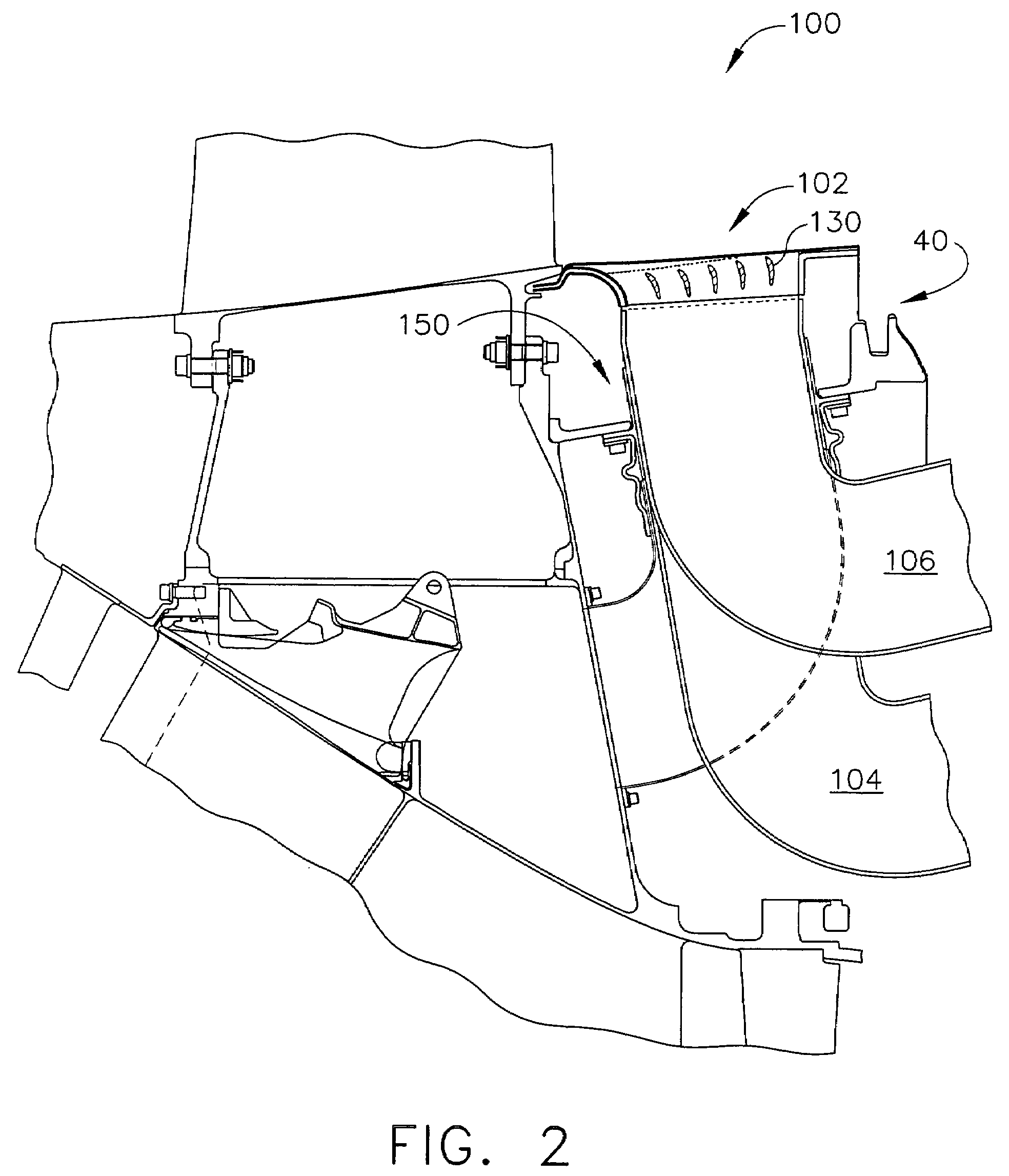Method and apparatus for operating gas turbine engines
a gas turbine engine and gas turbine technology, applied in the direction of machines/engines, non-positive displacement fluid engines, pump control, etc., can solve the problems of adversely affecting engine performance, thermal expansion or contraction of the rotor and stator assembly, and inability to occur uniformly in magnitude or rate, so as to facilitate the reduction of pressure losses of airflow into the inlet assembly and facilitate the reduction of pressure losses
- Summary
- Abstract
- Description
- Claims
- Application Information
AI Technical Summary
Benefits of technology
Problems solved by technology
Method used
Image
Examples
Embodiment Construction
[0013]FIG. 1 is a schematic illustration of an exemplary gas turbine engine 10 that includes a fan assembly 12 and a core engine 13 including a high pressure compressor 14, a combustor 16, and a high pressure turbine 18. Engine 10 also includes a low pressure turbine 20. Fan assembly 12 includes an array of fan blades 24 that extend radially outward from a rotor disk 26. Engine 10 has an intake side 28 and an exhaust side 30. Fan assembly 12 and low pressure turbine 20 are coupled by a low speed rotor shaft 31, and compressor 14 and high pressure turbine 18 are coupled by a high speed rotor shaft 32.
[0014]Generally, during operation, air flows axially through fan assembly 12, in a direction that is substantially parallel to a central axis 34 extending through engine 10, and compressed air is supplied to high pressure compressor 14. The highly compressed air is delivered to combustor 16. Combustion gas flow (not shown in FIG. 1) from combustor 16 drives turbines 18 and 20. Turbine 18...
PUM
 Login to View More
Login to View More Abstract
Description
Claims
Application Information
 Login to View More
Login to View More - R&D
- Intellectual Property
- Life Sciences
- Materials
- Tech Scout
- Unparalleled Data Quality
- Higher Quality Content
- 60% Fewer Hallucinations
Browse by: Latest US Patents, China's latest patents, Technical Efficacy Thesaurus, Application Domain, Technology Topic, Popular Technical Reports.
© 2025 PatSnap. All rights reserved.Legal|Privacy policy|Modern Slavery Act Transparency Statement|Sitemap|About US| Contact US: help@patsnap.com



